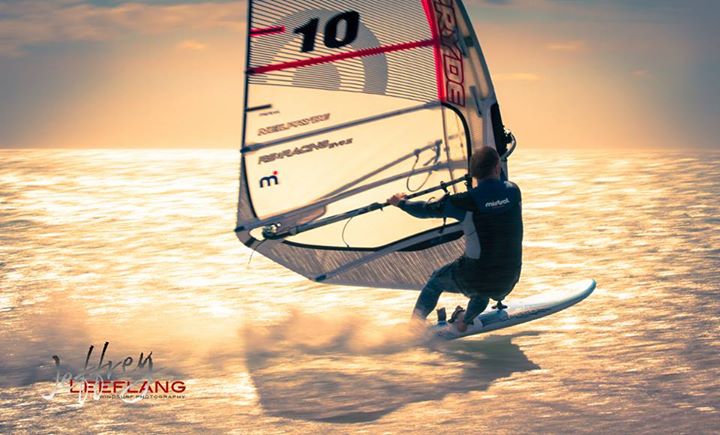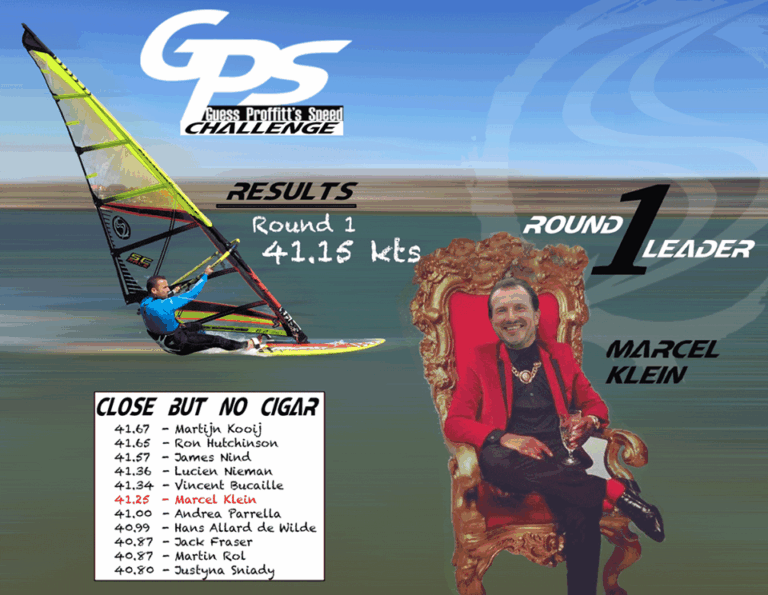The third board to be tested by Adrian Jones and the Clones, in the 2015 50cm Speed Board Test is the Mistral Speed…
[series align=’left’]
MISTRAL SPEED
Length – 244 cm
Max Width – 46.6 cm
30cm Width – 27.6 cm
Track from tail – 118 cm
Volume – 73 litres
Weight – 5.53 kg
More about the Mistral Speed Board.
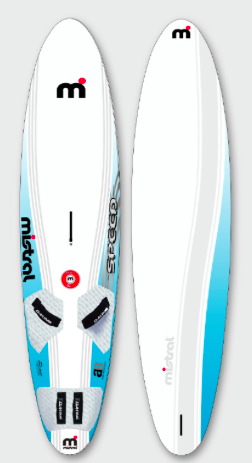
ON THE BEACH
Anders Bringdal knows a thing or two about windsurfing and speed sailing. Not only is he the Mistral brand manager, but he also broke the outright Windsurfing World speed record on the smaller, production version of the Mistral Speed board tested here. And just to reiterate, that wasn’t some tuned-up custom, but in fact, the exact same board you and I would be buying off the shelf.
At 47cm wide, the Mistral Speed is the narrowest board in this group. Sitting in the middle of the three-board Mistral speed range, it comes from a family of serious pedigree – the current production board World speed record holders no less, with a speed of 51.45 knots over 500m (achieved on the 41cm version)!
Anders still reckons this board is good to 50 knots, and who are we to argue!
The 47cm board tested here is slightly bigger than the current record holder, but Anders still reckons this board is good to 50 knots, and who are we to argue!
Compared with the other boards here, the Mistral is by far the longest (at 244cm), and the narrowest, giving it the most gunny profile of the group. Tail width measures in at 27.6cm, making it more than 4cm narrower than the Fanatic at this point. Mast track position is also the furthest back of all four boards, measuring 118cm from the tail.
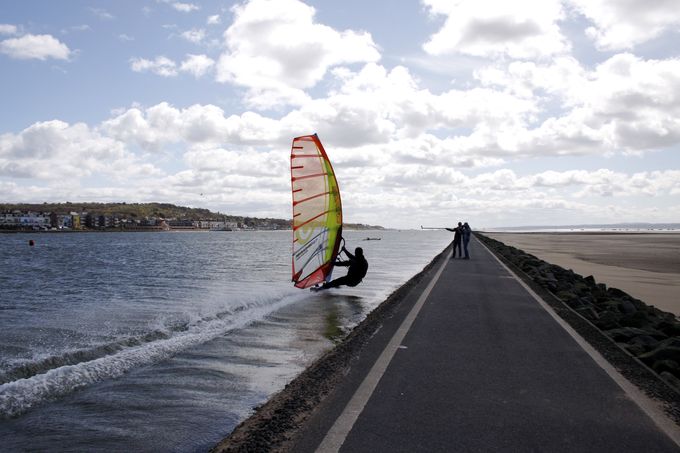
The Mistral is produced in a different factory to the other three boards and, whilst it weighs in at a not insignificant 0.7 kg heavier than the JP and Fanatic, it does have a great reputation for strength and certainly seemed to take the knocks and bumps well.
Mistral quote the volume at 73 litres compared to the other boards which are all in the 64-68 litre range. Whatever method these guys are using to measure their volumes, must be flawed, because there is no way the JP and Tabou felt nearly 10 liters smaller than the Mistral. Best bet is to take the volumes with a pinch of salt.
What’s most important is the sail carrying capacity of the boards and in that respect the Mistral is perhaps just slightly on the smaller side of the other three boards. Anders reckons it works best with sails of between 5.0m-7.0m and that seems a fair assessment, based on our findings; probably most comfortable between 5.5m-6.5m.
ON THE WATER
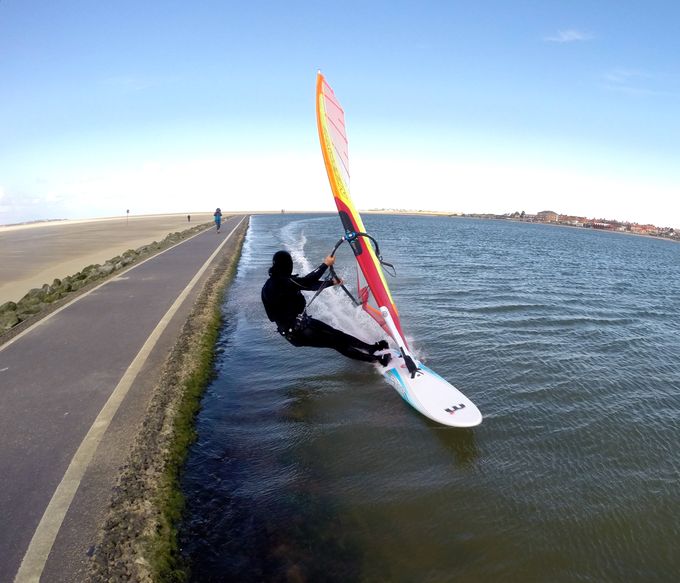
Of all the boards tested here, the Mistral instantly feels like the one that means business.
Of all the boards tested here, the Mistral instantly feels like the one that means business. That long slender nose and narrow width make it feel like a ‘real’ speed board underfoot. But don’t be put off by its aggressive proportions.
When testing, you occasionally come across a gem; a product that simply works so well and feels so natural to use that you wonder why they aren’t all made like this and the Mistral speed is one of those. It just works.
It somehow possesses an amazing blend of feeling radical and exciting, yet still being one of the easiest, most controlled and ultimately the fastest boards to use.
Despite its narrower width, the Mistral was arguably the second easiest board (behind the JP) to get going on. Something about the shape gives the board a real bite when trying to power it up onto the plane. Where other boards have to be headed right off the wind to get going, the Mistral just bites and allows the rig to power up and accelerate the board straight onto the plane with no such drama.
In chop, that extra length gives the Mistral some extra security over the other boards, but it’s good characteristics can’t just be put down to length. The Mistral stays locked down and controlled, even in the worst chop, allowing the rider to focus on speed, rather than taming the board.
It just accelerates effortlessly on every gust. It’s extremely impressive.
On a tighter reach, the Mistral has a slightly ‘older school’ and more planted feel, with that longer nose and extra board weight almost making the board feel a little unreactive and ‘wooden’ underfoot compared to the others. However as soon as you bear off the wind, the board just comes alive. The acceleration is incredible and as it gathers speed, you notice just how easy this board is to go fast on. Everything feels so balanced and right, you literally just stand there and the board does all the work for you. But that’s not to say it’s boring. Far from it in fact. Despite its easy handling, the Mistral was the board that gave the greatest feeling of speed. You really feel like you are flying on this board. It has a very frictionless feel on the water and where the other boards feel like they almost reach a top speed, you don’t get this with the Mistral. It just accelerates effortlessly on every gust. It’s extremely impressive.
Realising just how important it is to keep the back foot as low as possible on a broad reach for both control and comfort, this second incarnation of the Mistral 47 has had the tail thinned down and thickness reduced from the board under the back strap. This keeps the back foot lower on the Mistral than on any of the other boards and illustrates perhaps the level of detailing that input from the likes of Anders has had on this board.
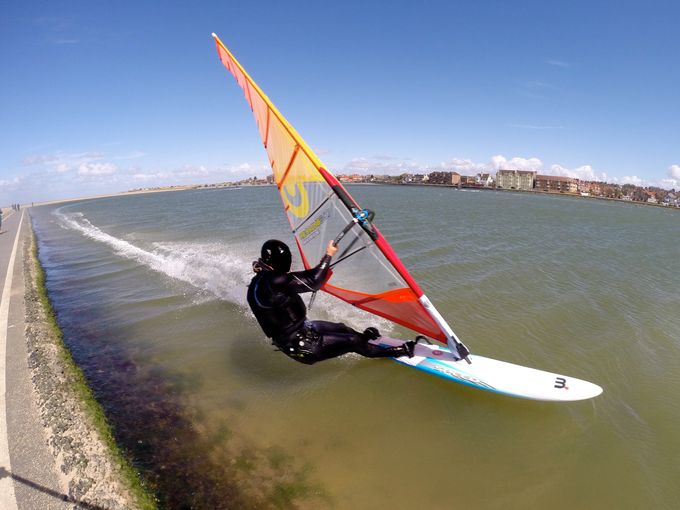
That said, detailing, control and sensation are all well and good, but ultimately in a speed board what really matters is how fast it goes. And to that extent, the Mistral is a winner. Using the GPS there was very little to pick between the other 3 boards, but consistently, the Mistral would be just a little bit quicker. It wasn’t necessarily huge margins, maybe a quarter of a knot, sometimes a half, but there was no doubt it was quicker. And in a speed board, that is a big thing.
Once at the bottom of the run, the Mistral was great to gybe out on. Its narrow width and grippy rails made it a lot of fun, although the reduced width did make it harder to exit at speed than on the other boards. It also made it the trickiest of the group for getting back upwind on, particularly with the bigger 6.4m rigs. It generally pointed a few degrees lower and required a bit more sensitivity on the back foot, but was still quite capable of getting back up the course. Our Clones even managed to tack it consistently, so don’t be put off!
OVERALL
The Mistral speed is an exceptional board. Whether you are a professional speedster hunting down World records or an amateur freerider about to invest in your first speed board, it’s hard not to recommend the Mistral. It pretty much has it all; control, comfort, excitement and most importantly, speed. You could argue that the JP and Tabou are slightly more ‘all-round’ shapes and easier for all round sailing, but when it comes to going the quickest down a speed run, the Mistral has them all beat. Want proof? Give them all a try and then check the GPS…

